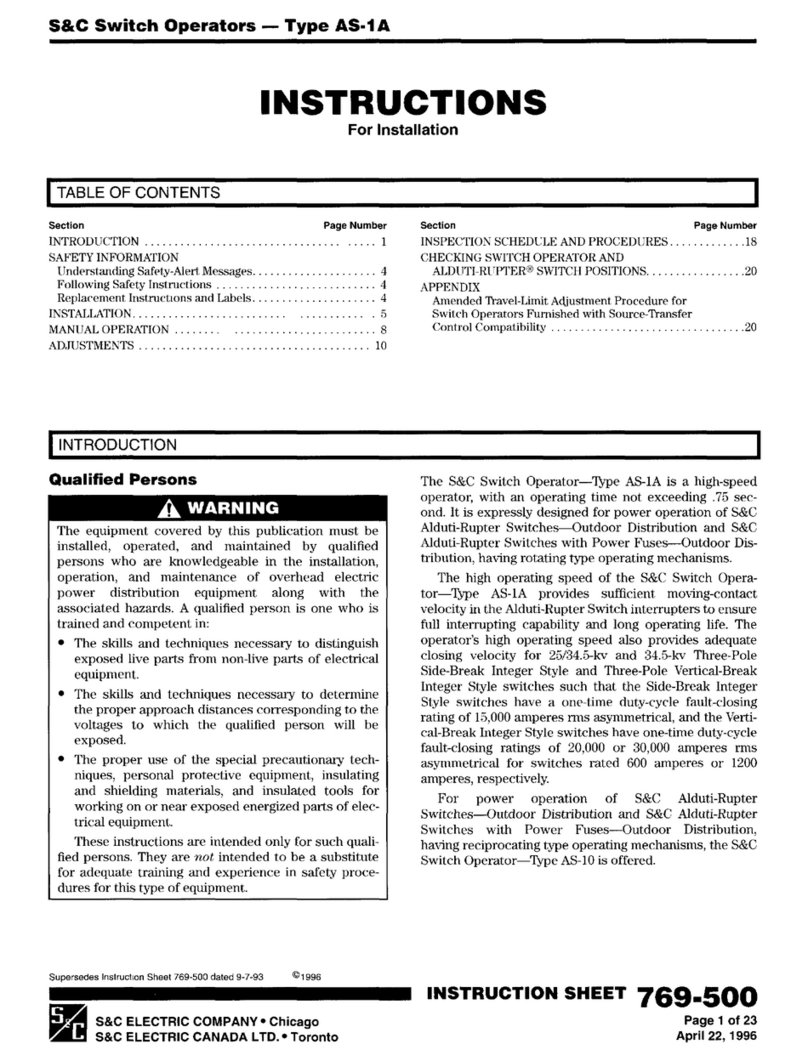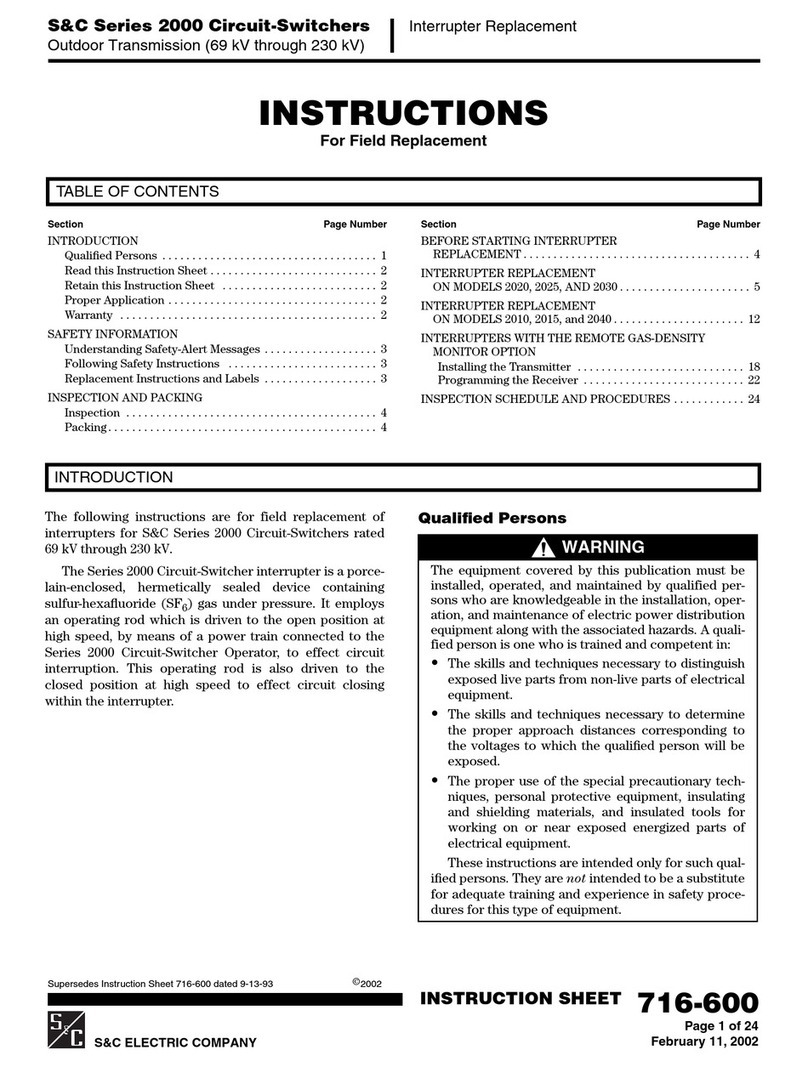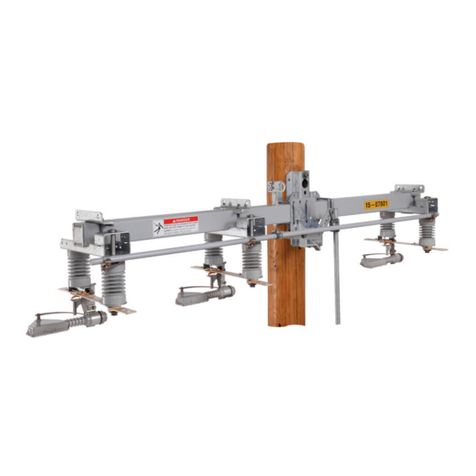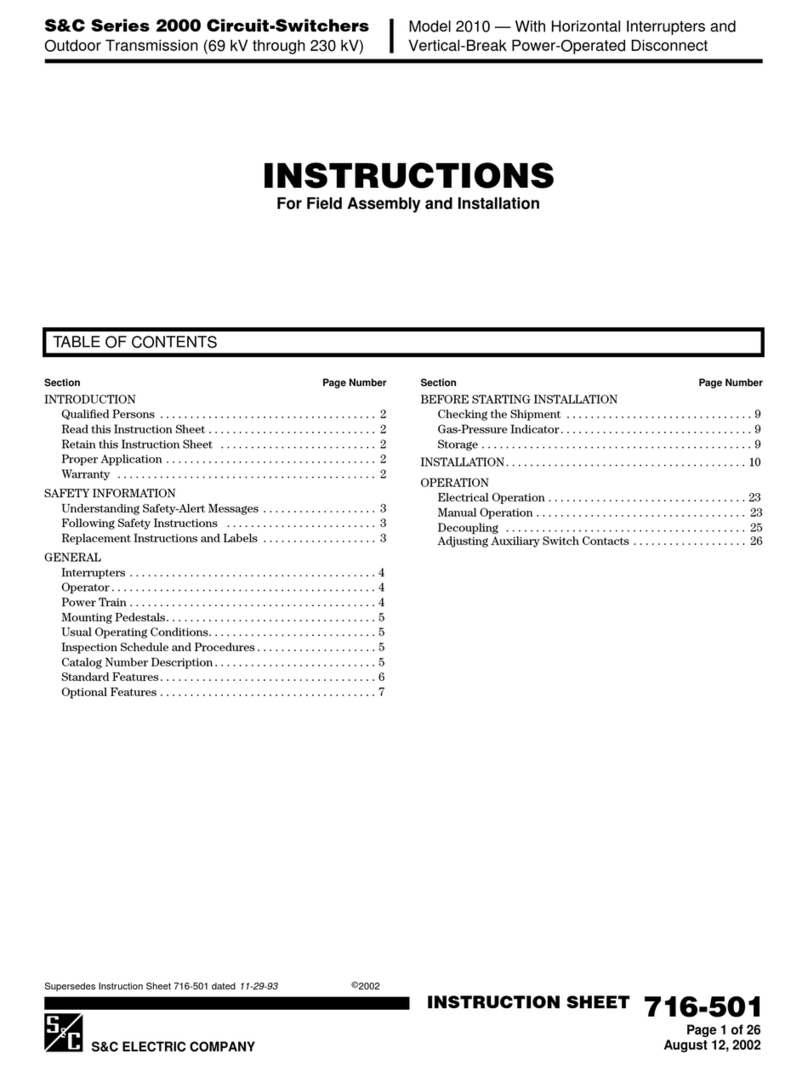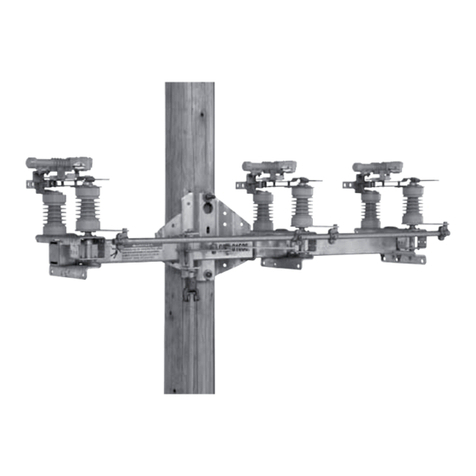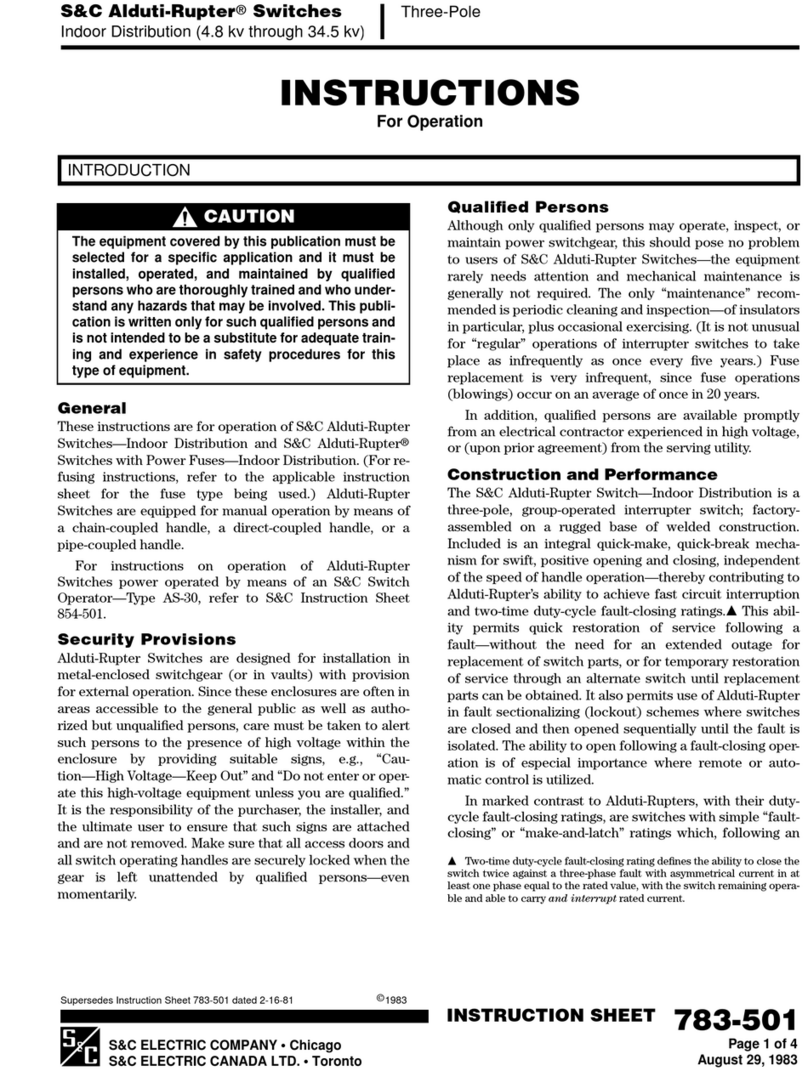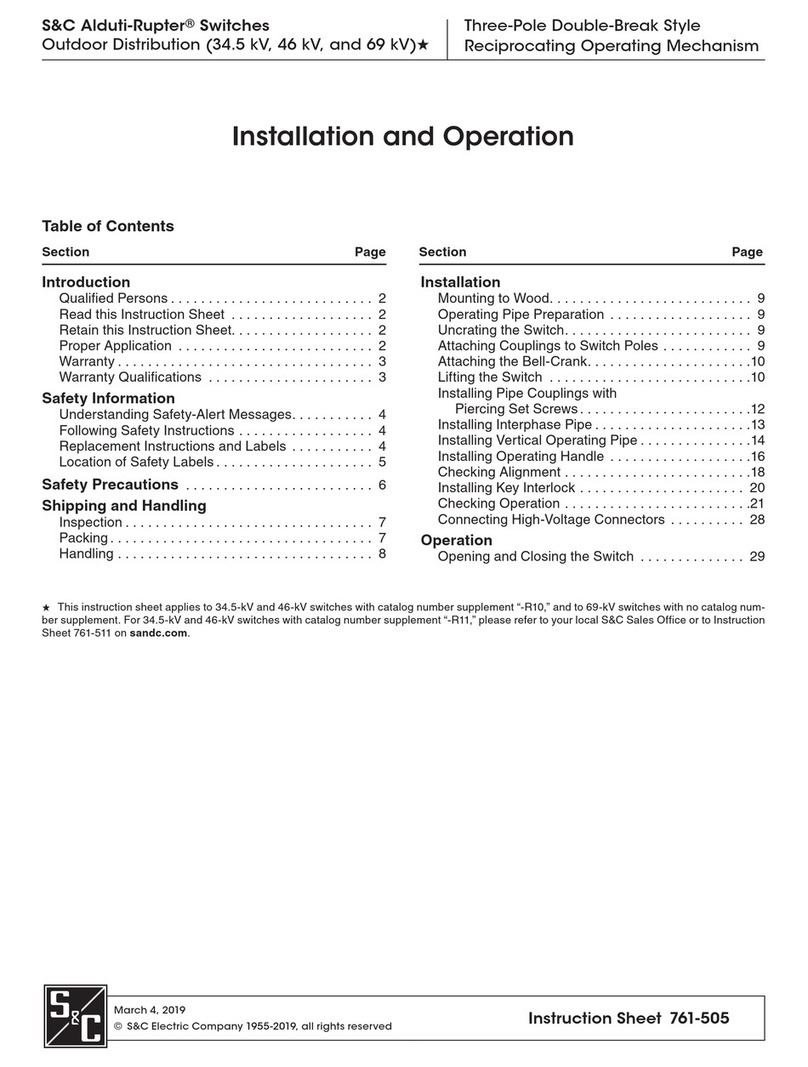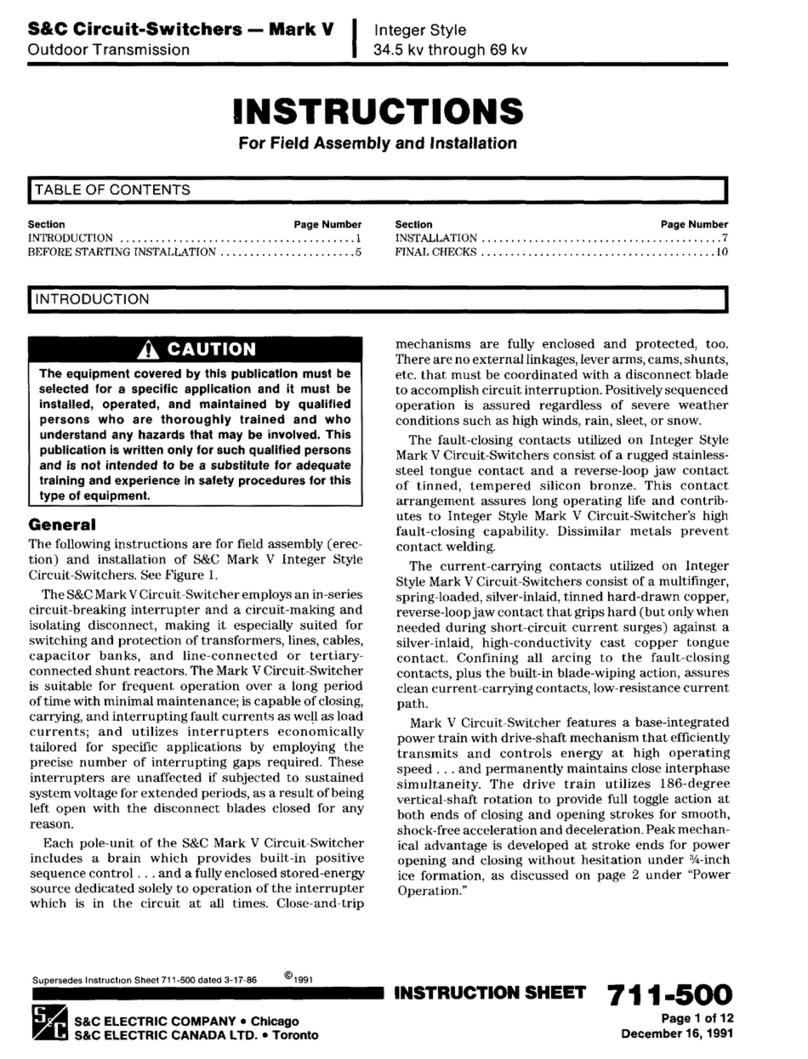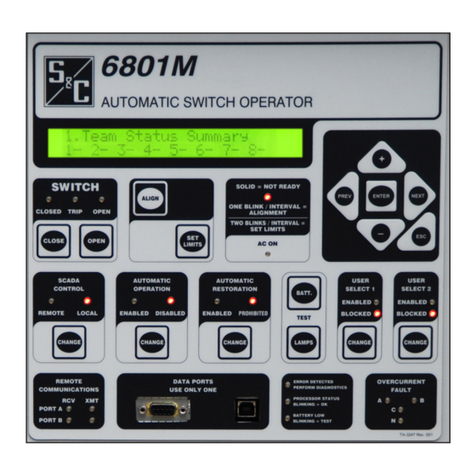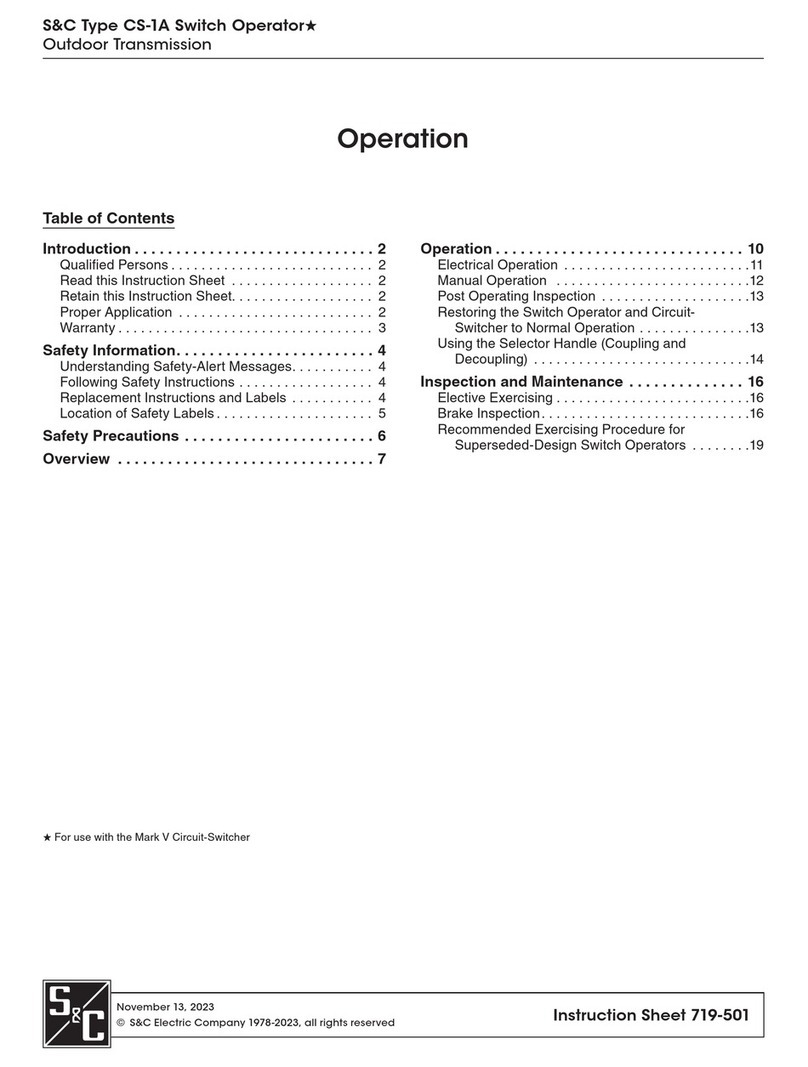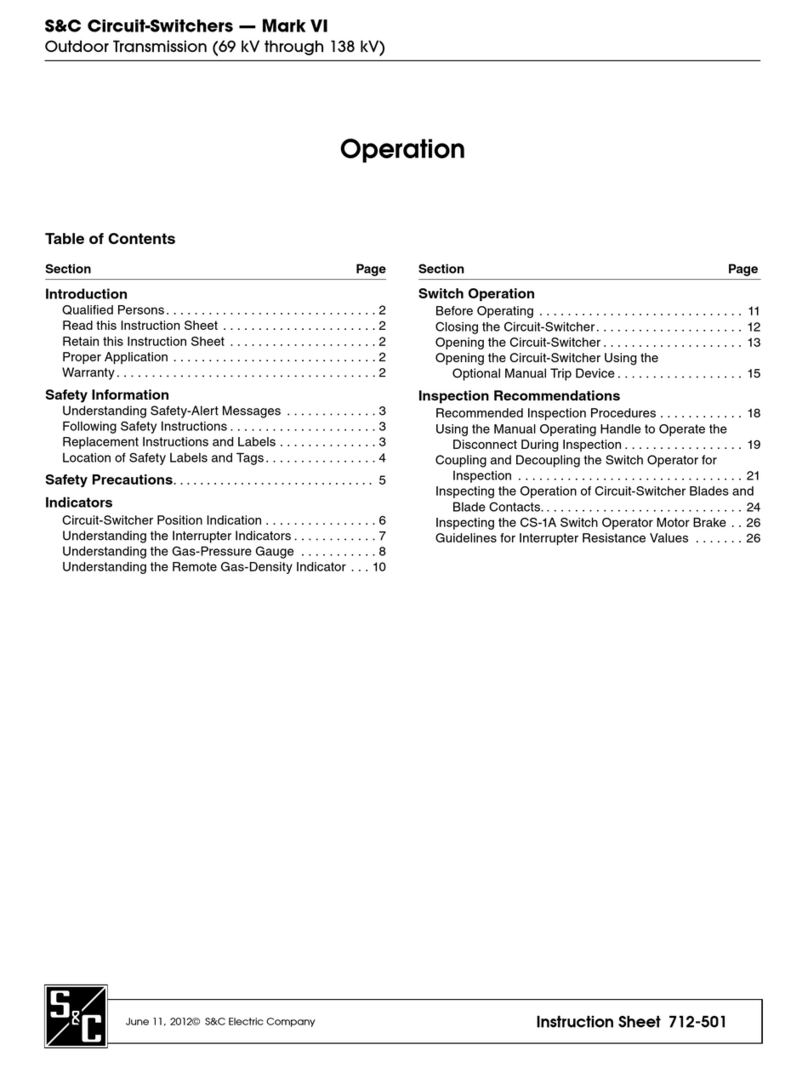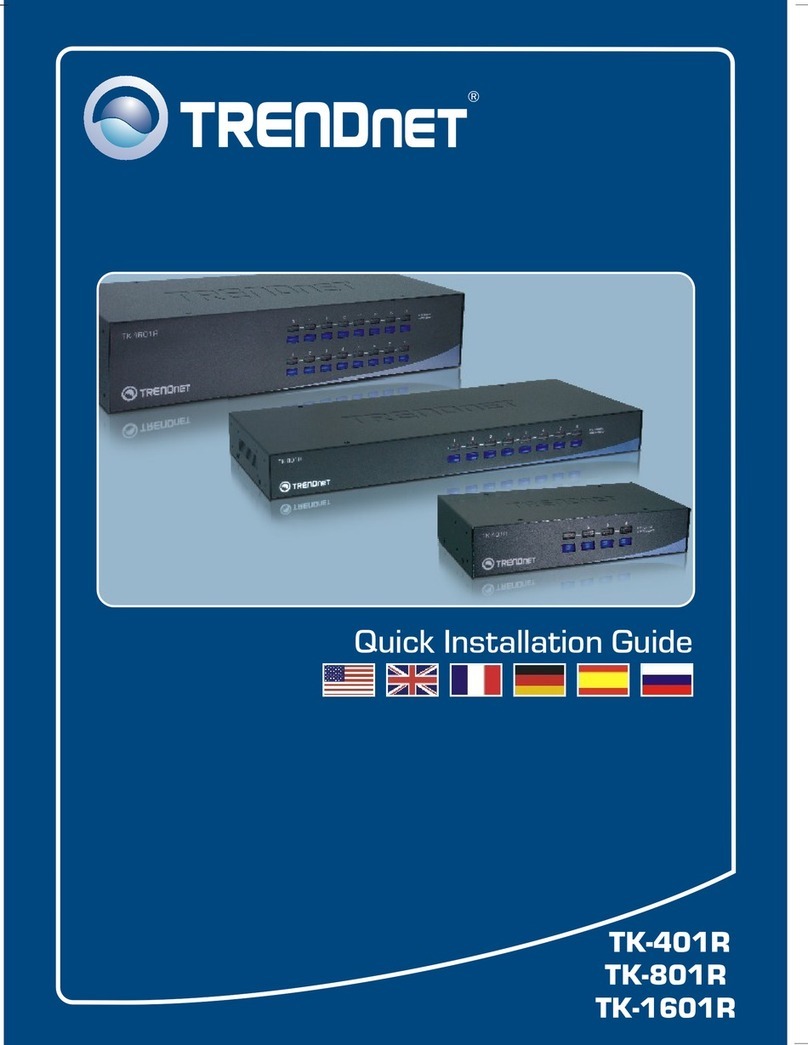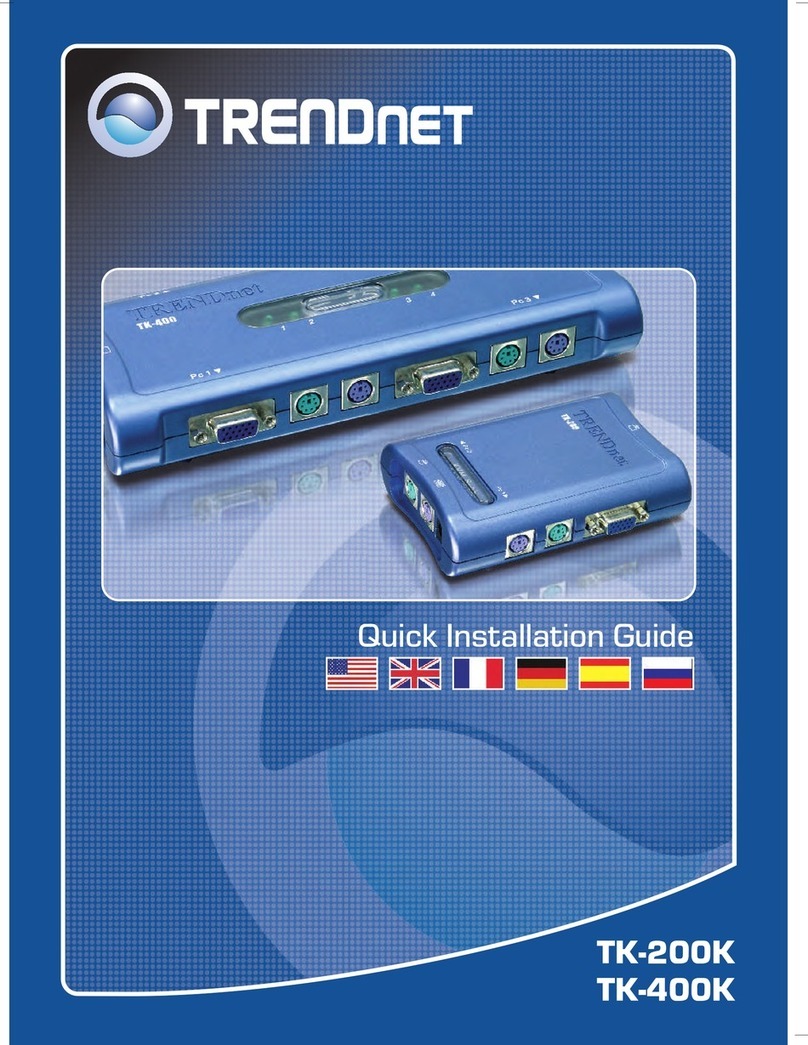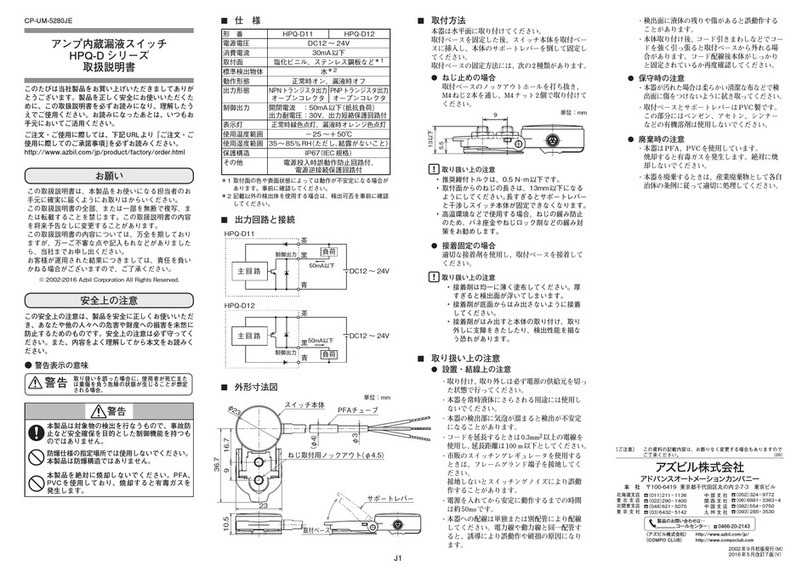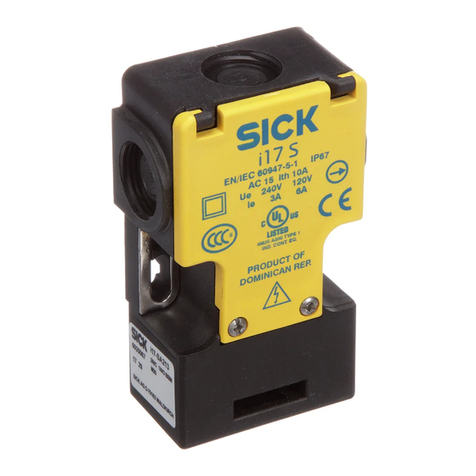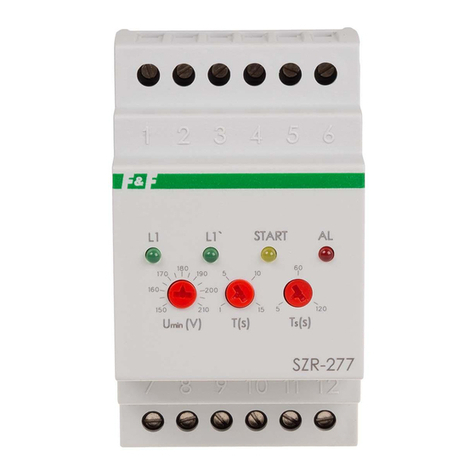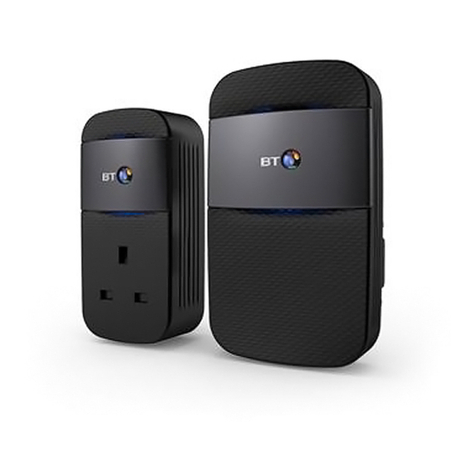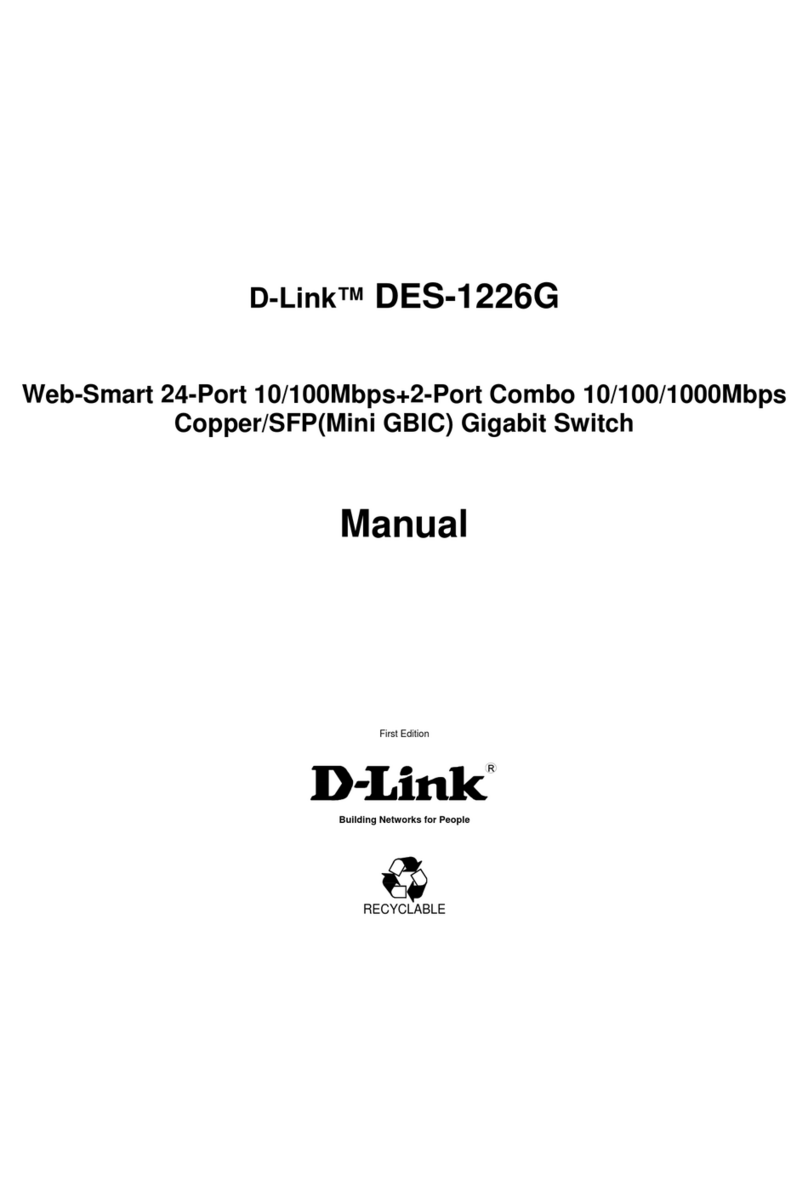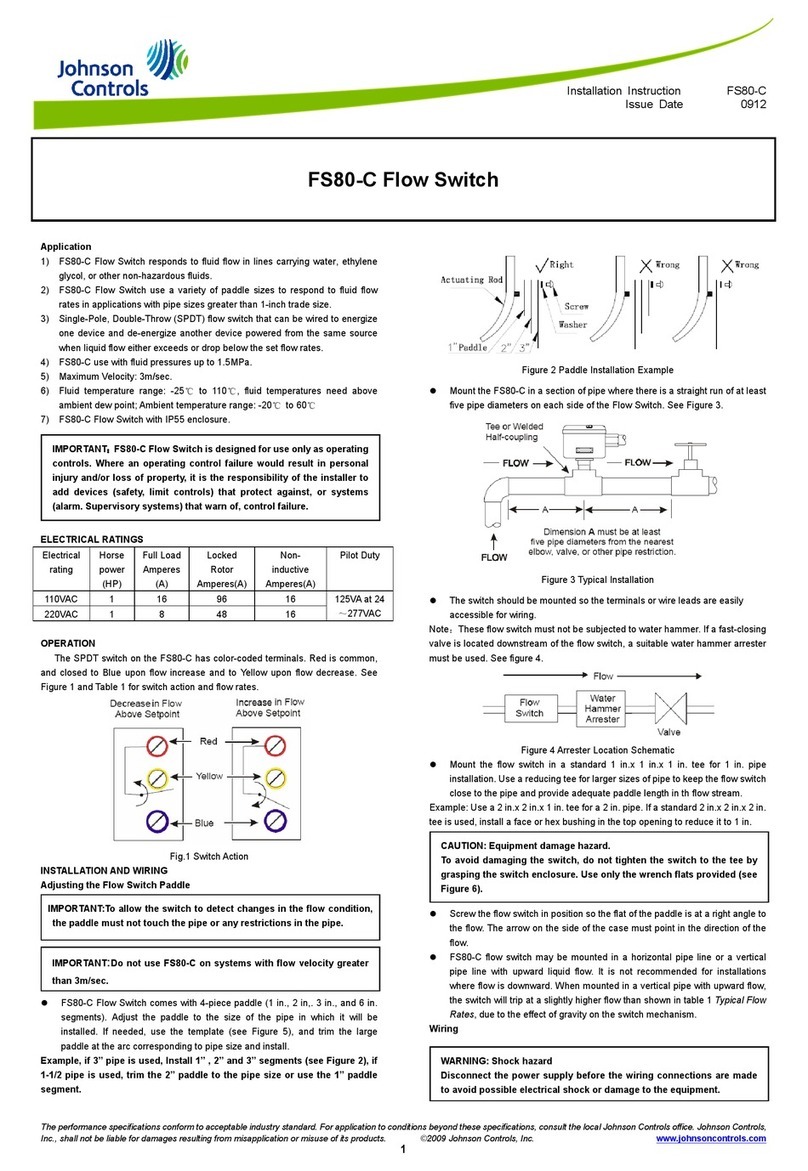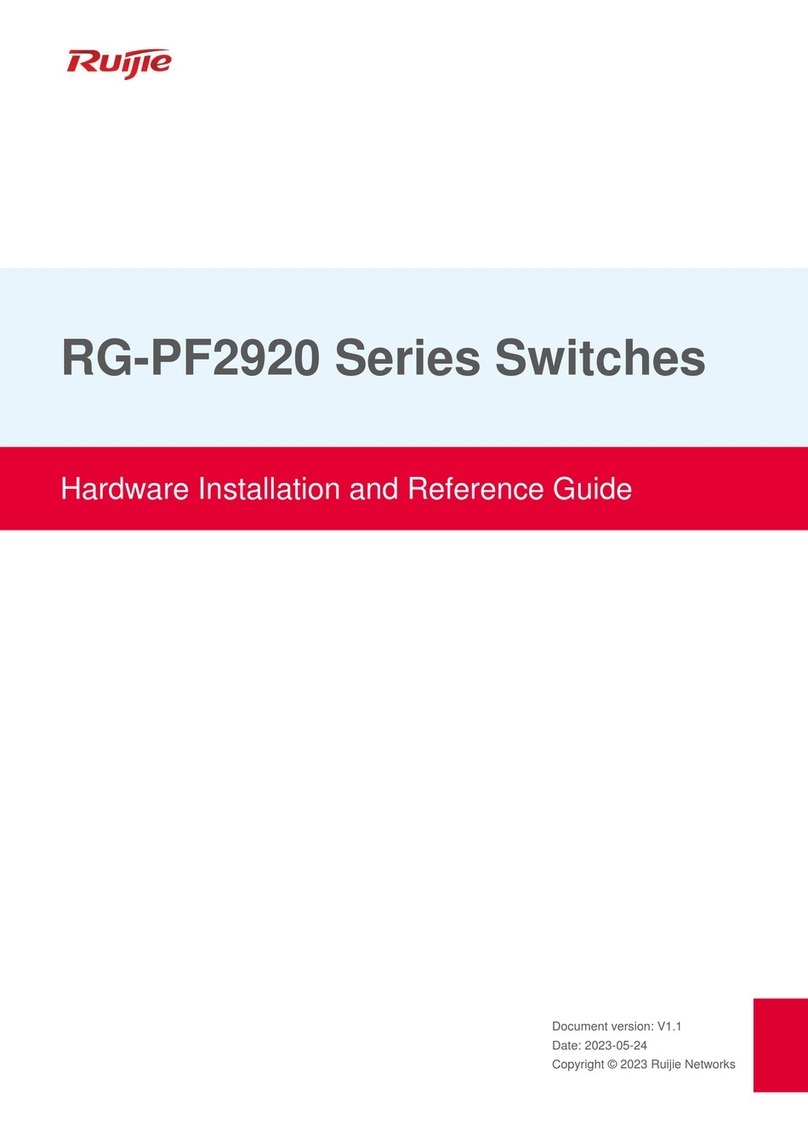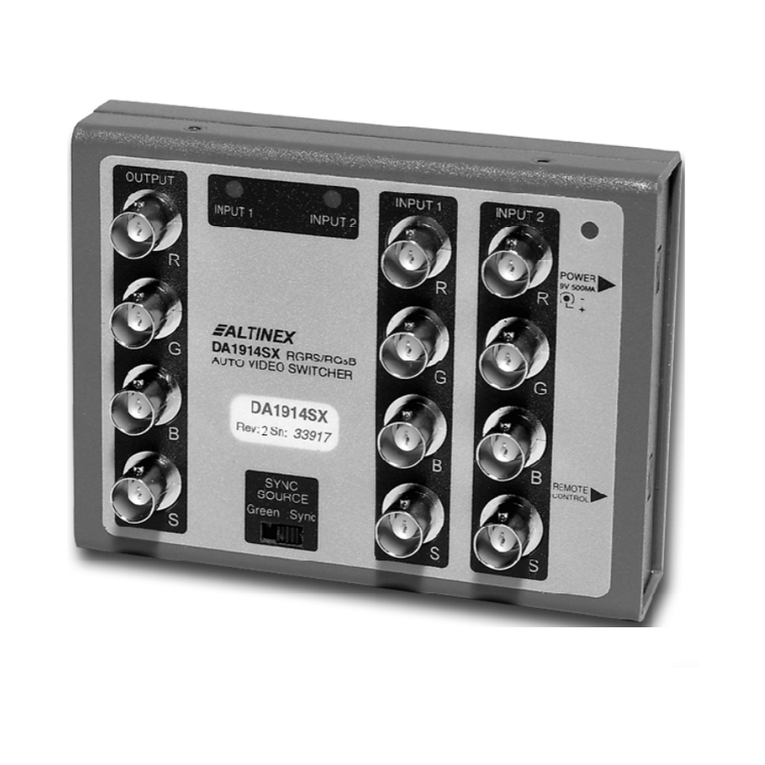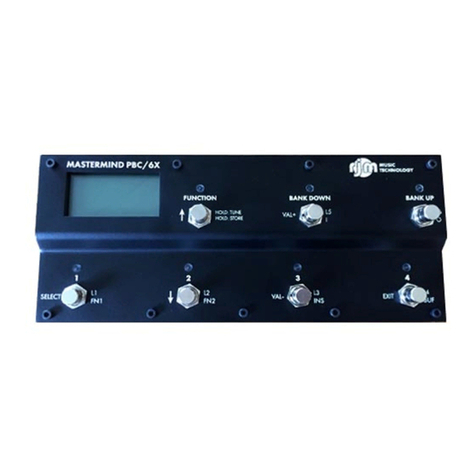
S&C Instruction Sheet 761-525 7
Shipping and Handling
Inspection
Examine the shipment for external evidence of damage as
soon after receipt as possible, preferably before removal
from the carrier’s conveyance. Check the bill of lading to
make sure the listed shipping skids, crates, and containers
are present:
If there is visible loss and/or damage:
1. Notify the delivering carrier immediately.
2. Ask for a carrier inspection.
3. Note the condition of shipment on all copies of the
delivery receipt.
4. File a claim with the carrier.
If concealed damage is discovered:
1. Notify the delivering carrier within 15 days of receipt of
shipment.
2. Ask for a carrier inspection.
3. File a claim with the carrier.
Also, notify S&C Electric Company in all instances of
loss and/or damage.
Packing
Study the erection drawing carefully and check the bill of
materials to be sure all parts are at hand. When a standard
mounting arrangement is specied, the shipment includes:
• Three switch poles
• Operating-pipe sections for interphase, horizontal-
connecting, and vertical sections (The switch may be
furnished “less operating pipe,” if specied.)
• Operating-mechanism components, such as handle,
rod guides, outboard bearing, and couplings—each
tagged and keyed to the bill of material for ready
identication
The components included with these modifications are
shown on the erection drawing bill of material under the
specified “-SX” suffix. They include:
-S1 One tubular fiberglass insulating section in vertical
operating shaft
-S2 One Cypoxy™ Insulator unit in vertical operating
shaft
-S6 Key interlock—single lock for a “locked-open”
application
-S6L Provision for key interlock—allows future addition
of single lock for “locked-open” application
-S7 Auxiliary contact switch with 4 N/O and 4 N/C
contacts (600 Vac, 20 A)
-S8 Provision for power operation of pole-mounted
switches by S&C Switch Operator—Type AS-10
-S9 Provision for power operation of steel-structure
or pedestal-mounted switches by S&C Switch
Operator—Type AS-10
-S16 Provision for power operation of pole-mounted
switches by S&C 6801M Automatic Switch Operator
The “-V1” or “V2” erection drawing suffix adds (one or
two, respectively) extra 6-foot 10-inch (208-cm) lengths
of pipe and includes the appropriate number of extra
couplings and guides.
Drawing RD-10009 , detailing the various modifications,
is included in addition to the erection drawing.
Power Operation: If sufx “-S8”or “-S9” is specied,
S&C Instruction Sheets 769-510 and 769-511, “Type
AS-10 Switch Operators,” are included with the switch
operator shipment. Instruction Sheets 769-510 and
769-511 cover installation, operation, and adjustment of
the appropriate switch operator and should be used in
conjunction with this instruction sheet where applicable.
If sufx “-S16” is specied, associated S&C Instruction
Sheets for the 6801M Automatic Switch Operator are
included with the switch operator shipment. Not all
mounting arrangements are suitable for power operation;
consult the nearest S&C Sales Ofce for details.
